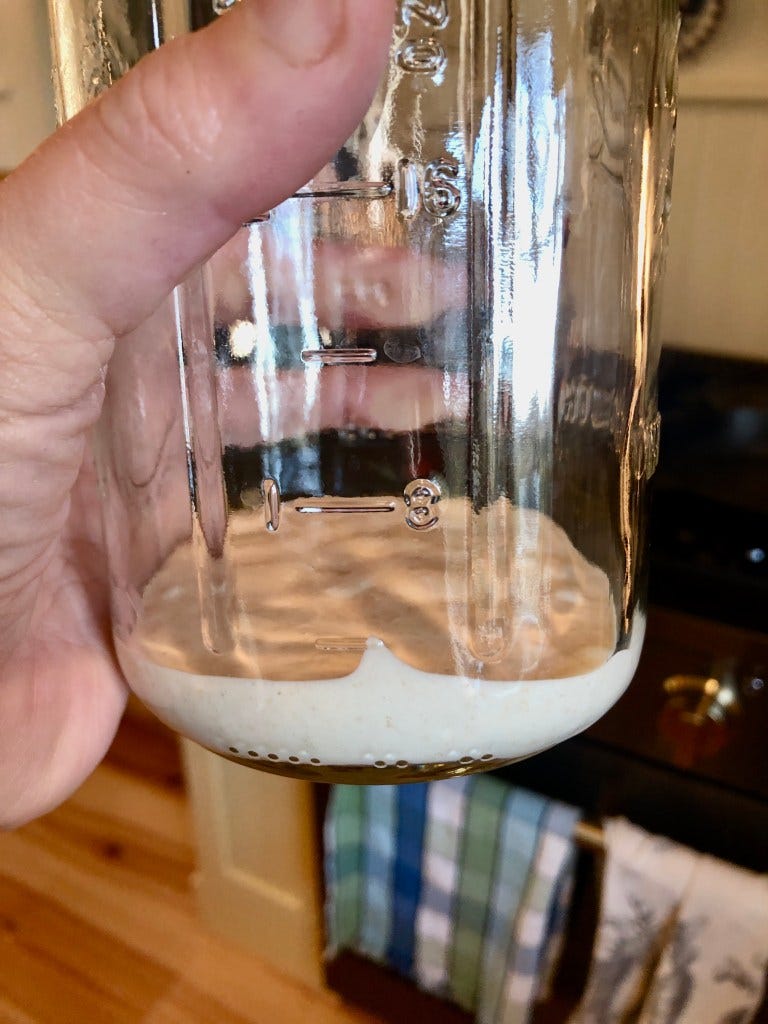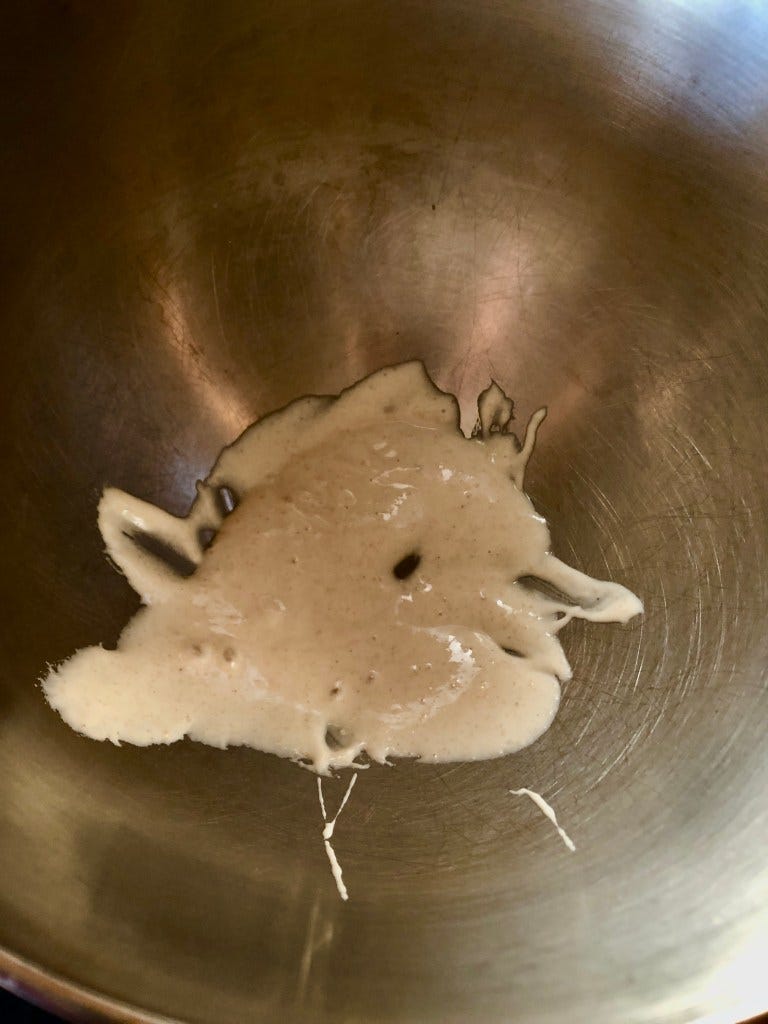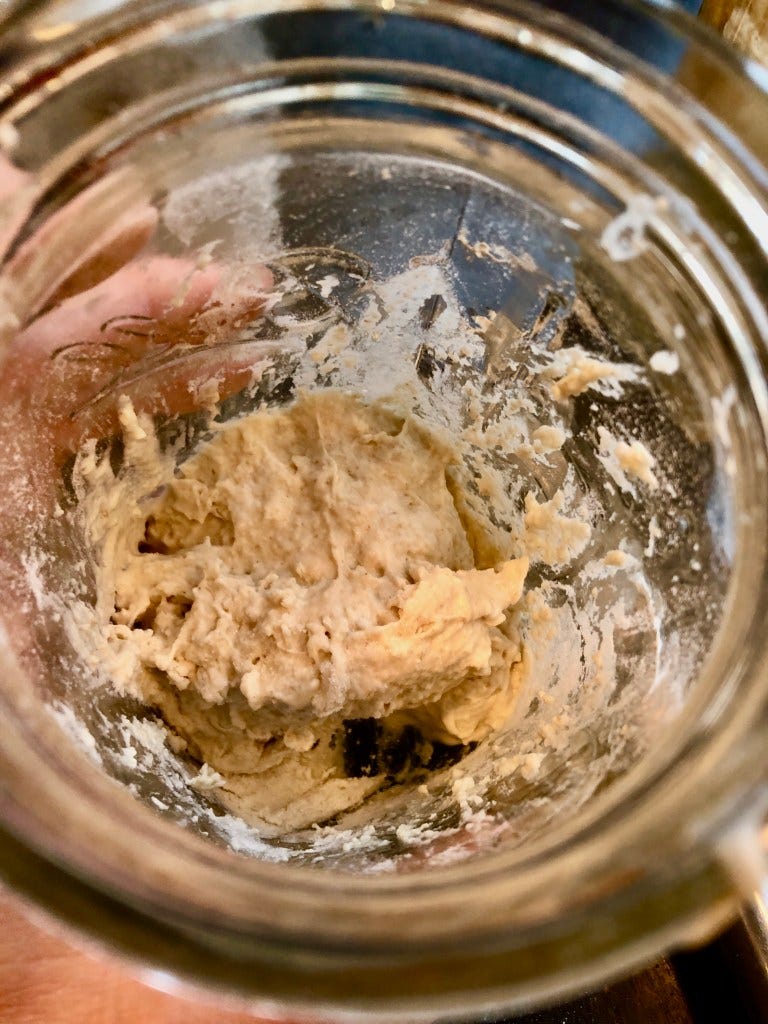On Like Mother, Like Daughter, I overcame tech difficulties, finally, and posted about my no-discard starter process and a bit more on the sandwich bread we’ve been making, in order to get the feel for how natural fermentation works, before tackling classic crusty sourdough loaves. Go there for more details on what follows here.
Here is my own recipe, for printing, for sourdough sandwich bread. (I said I wasn’t going to do this, but I find the KA version, when the yeast is left out, is just not quite the right quantity for the pans.) This recipe will help you leave the yeast behind, I hope!
This week, pay attention to how things look — the starter in the jar, the flour in the mixing bowl — and how the salt feels in your hand once you’ve measured it out. Work on nailing the first rise (“bulk fermentation”).
The School for Housewives brings you short, practical, and thoughtful messages to inspire you to make your home. For the longer version:
Don’t wish to subscribe just now? How about this:










I have been meaning to share another sourdough hack here. Once you have a good strong starter, scrape the dried up starter from the sides of your jar whenever you change jars. Pop it into a little ziplock bag (or other airtight container) and stick it in the freezer-labeled. As someone who has killed many a starter, this has saved me several times from having to start completely from scratch. If you accidentally kill your starter you can start over, adding this dried up starter to your flour and water, and you will get a nice strong starter again in a shorter time than starting with just flour and water.
What is the purpose/ benefit of leaving the yeast out? 🧐